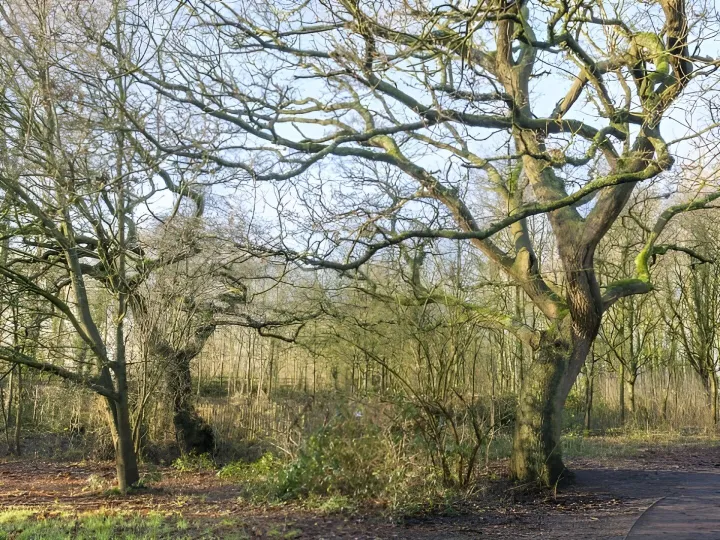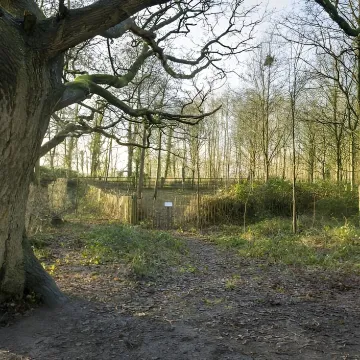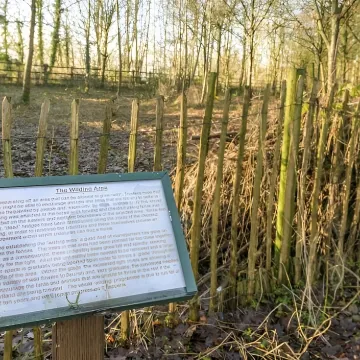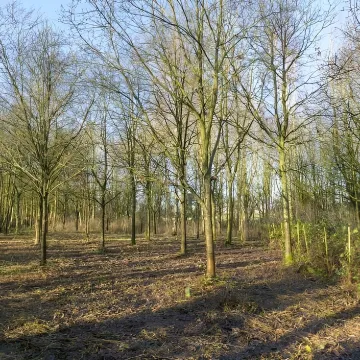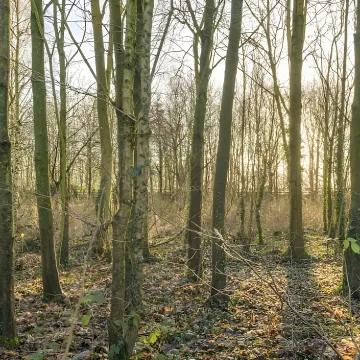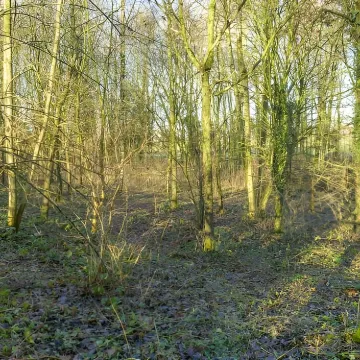Once the Woodland Trustees had decided to set aside approximately 2,500m² of the woodland to go "wild", it was necessary to decide how we would approach it. While it would be possible to leave everything to nature, we intended for our experiment to last for 10 to 15 years. It would take much longer than that for the tall, matchstick-thin oak trees to die and eventually admit enough light to allow the understorey to flourish. Therefore, our approach was to pursue a "managed wilding," rather than allowing the area to develop through benign neglect.
After fencing the area, we began by felling some trees to admit additional light. The number of trees felled was small, but the result after just a few months was remarkable. The ground vegetation, previously sparse and unimpressive, flourished by June 2019. A quick survey revealed a significant increase in biodiversity. In addition to the usual woodland grasses, the area began to grow Bluebells, Brambles, Campion, Cow Parsley, Dandelions, Field Buttercups, Garlic Mustard, Goosegrass, Hogweed, Nettles, Sorrel, Stinking Woundwort, Vetch, Violets, Wood Avens, and masses of ivy. The additional light had revived plants that had previously struggled to grow under the spindly oak trees.
Looking ahead, the ultimate goal is to create an area dense enough to provide privacy and a peaceful environment for the shy birds and small animals that couldn't find a home in the denser woodland. Brambles will be allowed to grow freely, and stands of hazel will be planted to create a different kind of dense environment.
By 2024, we are about halfway through the initial 10-year period allocated for this experimental wilding of 2,500m² near Townfield Lane. Other than the fencing and the felling of a few dead or dying trees to let more light in, little work has been done, relying largely on the "benign neglect" approach. However, we began to wonder if this approach was the most effective way to achieve our goal of providing a home for shy animals and birds. To answer this, we sought advice from a botanical consultant, Dr. Jane Roberts.
In the autumn, Jane toured the wilding area with several Trustees. She was impressed with the progress and praised the intention to create a sanctuary for more timid animals and birds. Jane agreed that nature could indeed manage the area itself, but she pointed out that without some management, we would end up with a community of woodland trees, which wouldn’t help achieve our goal. She suggested that we would need to manage the understorey each year to support the less-vigorous plants we want to encourage.
Jane also noted the brambles and nettles growing in the area, which need to be carefully managed to allow other plants to thrive. She recommended that the brambles and nettles away from the boundary should be strimmed two or three times a year to prevent them from overwhelming other plants. While this approach won’t eradicate the brambles and nettles quickly, over time it will help maintain a balanced environment.
Additionally, the ground layer and understorey need encouragement. Jane identified plants such as avens (Geum), knapweed (Centaurea), and red campion (Silene) growing well in the area. By studying the plants thriving in the rest of the woodland, we can decide which ones to propagate and plant in the glade.
Moving forward, volunteers will help support nature’s growth in the wilding area on Thursdays, as we continue to create a welcoming environment for our shyer animals and birds.
